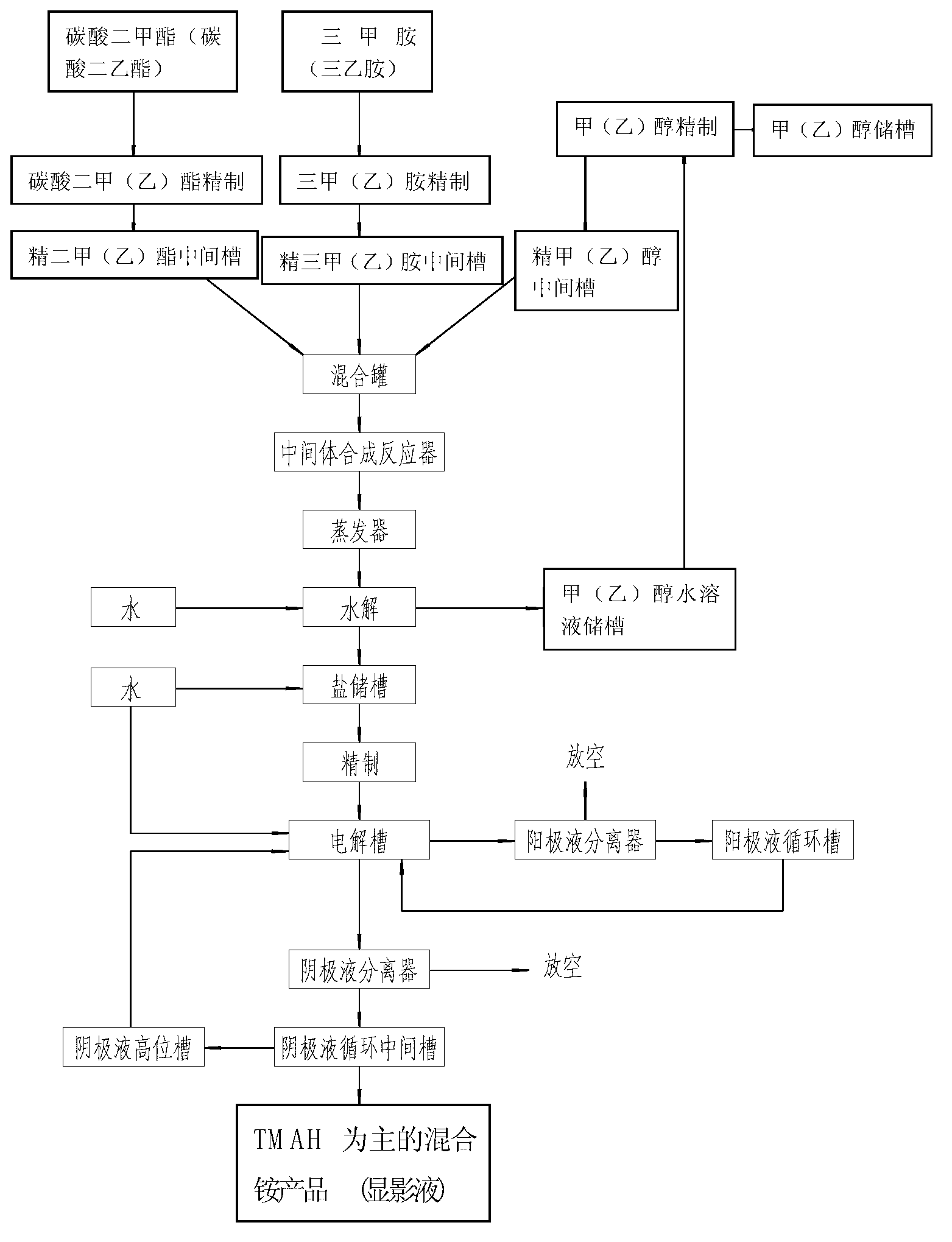Preparation method of photoetching developing liquid
A developing solution and photo-etching technology, applied in the field of developing solution preparation, can solve the problems of swelling and dissolving disconnection, small Array array, unsuitable application of a single TMAH solution, etc., and achieves low manufacturing price, elimination of adverse effects, and easy preparation. and the effect of industrial application
- Summary
- Abstract
- Description
- Claims
- Application Information
AI Technical Summary
Problems solved by technology
Method used
Image
Examples
preparation example Construction
[0020] The preparation method of photoetching developing solution of the present invention comprises the following steps:
[0021] The first step, refining and mixing: absorb the refined trimethylamine and triethylamine with methanol polar solvent, and add them to the reaction kettle according to the set ratio. The amount of trimethylamine and triethylamine can be added in the following ratio: molar ratio triethylamine: trimethylamine = 0.10-0.50:1. The preferred molar ratio of triethylamine: trimethylamine = 0.10-0.20:1. Dimethyl carbonate is added to the reactor after being refined by rectification. The amount of dimethyl carbonate added is: molar ratio trimethylamine: dimethyl carbonate = 0.7-1.4:1. The preferred molar ratio of trimethylamine: dimethyl carbonate = 0.9-1.3:1.
[0022] The second step, synthesis: the above solution is fully mixed in the autoclave. Replace the air with nitrogen, pressurize, confirm the system pressure, and control the reaction system press...
Embodiment 1
[0035] 0.5 moles of triethylamine and 1 mole of trimethylamine were respectively refined, and dissolved in 2.8 moles of refined methanol, added to the autoclave, and then 1 mole of dimethyl carbonate was added to the autoclave, replaced with nitrogen, at 110 °C, the pressure was 1.2MPa and reacted for 8 hours. The reaction conversion was 98% based on dimethyl carbonate. The intermediate obtained by the reaction was distilled under reduced pressure to remove most of the methanol, and then an excess of high-purity water was added to carry out hydrolysis at 68 degrees Celsius. During the hydrolysis, part of the water and methanol were distilled out, and after condensation, the product was refined and returned to the methanol storage tank. The hydrolyzed salt is refined and sent to the electrolysis process. The electrolysis temperature of the electrolyzer is 70 degrees Celsius, and the current density is 500A / m 2 , The concentration of the product obtained by electrolysis is 20%...
Embodiment 2
[0037] The mixture of 0.1 mole of triethylamine and 1 mole of trimethylamine is refined, dissolved in 2.8 moles of refined methanol, and added to the autoclave. Add 0.8 mole of dimethyl carbonate and 0.2 mole of diethyl carbonate to the autoclave, replace with nitrogen, and react for 4 hours at 130° C. under a pressure of 3 MPa. The reaction conversion rate is 99.11% based on dimethyl carbonate. The intermediate obtained from the reaction was distilled under reduced pressure to remove most of the methanol, and then an excess of high-purity water was added for hydrolysis (at a temperature of 72 degrees Celsius). During the hydrolysis, part of the water and methanol were distilled out, condensed and refined back to the methanol storage tank. The hydrolyzed salt is refined and sent to the electrolysis process. The electrolysis temperature of the electrolyzer is 65 degrees Celsius, and the current density is 5000A / m 2 , The concentration of the product obtained by electrolysis i...
PUM
 Login to view more
Login to view more Abstract
Description
Claims
Application Information
 Login to view more
Login to view more - R&D Engineer
- R&D Manager
- IP Professional
- Industry Leading Data Capabilities
- Powerful AI technology
- Patent DNA Extraction
Browse by: Latest US Patents, China's latest patents, Technical Efficacy Thesaurus, Application Domain, Technology Topic.
© 2024 PatSnap. All rights reserved.Legal|Privacy policy|Modern Slavery Act Transparency Statement|Sitemap

